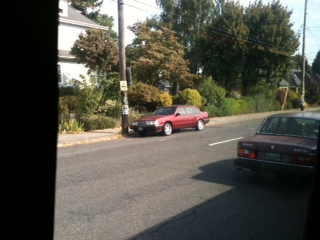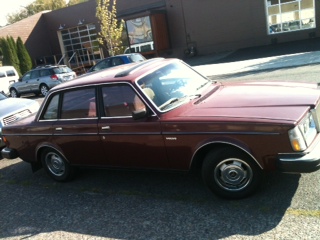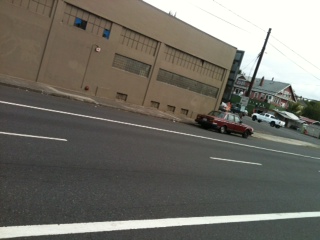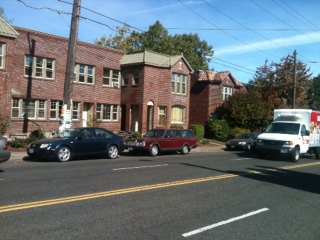
“You from one of those… Ivy league places?” A Scatman Crothers-ish TSA agent asked me this, half-accusingly, as I passed through his station, thus continuing the long tradition of my being attributed to regions I’ve never even visited. Not really, I haltingly responded, and the man softened. “Hey, that’s alright,” he said. Ain’t nothing wrong with that.”
Geoff Dyer writes that Friedrich Nietzsche “loved what he called ‘brief habits’ but so hated ‘enduring habits’ that he was grateful even to the bouts of sickness or misfortune that caused him to break free of the chain of enduring habit. (Though most intolerable of all, he went on, would be ‘a life entirely devoid of habits, a life that would demand perpetual improvisation. That would be my exile and my Siberia.’)” The passage comes in Dyer’s essay “Otherwise Known as the Human Condition”, in which he describes his perpetually restarting quest, in each city he lives in or visits, to find the ideal cappuccino and donut for his “elevenses.” (That’s a British thing.) Even these few short days in Portland have me reveling in Nietszcheanly brief habits of my own, the most enjoyable of which finds me waking up early, hopping on my bicycle, and riding across one of the Willamette River’s many bridges (I still haven’t counted them) for coffee on the east side of town. Theoretically I could continue this habit in Los Angeles, heading east for a cafe de olla or something, but the Los Angeles River, for all its neglected Repo Man charm, doesn’t offer quite the same experience.

Pulling up a map, I see that eight bridges connect one half of Portland to the other. My first cycle trips across these proved glorious enough that I decided to ride across them all. After interviewing bicycle planning consultant Mia Birk, I immediately rented a Jamis and commenced two-wheeled exploration. This strikes me as the way to most thoroughly figure out a city, even the bicycle-unfriendly ones; hell, almost everything I’ve figured out about Los Angeles, I’ve figured out while biking. A purely psychological advantage accompanies the navigational one. David Byrne, who in part inspired me to do this, writes in Bicycle Diaries that, on a bike, “your unconscious is free to kind of mull over what it is you’ve got to deal with that day or whatever creative stuff you’re working on. Sometimes the problems get a little closer to being solved by the time you get to where you’re going.” Or as Douglas Coupland said, albeit about driving, it’s “the only place where you’re legally allowed to not deal with your problems. It’s enforced meditation and this is good.”
So if you want to start cycling-as-everyday-transport anywhere in North America, start it in Portland. Alas, the city’s relatively astonishing density of cycle-related infrastructure and amenities quickly inflated to ludicrous proportions my expectations for same. Then came the night that I blindly attempted to cross the Fremont Bridge, which is pretty much the 405. That went… ingloriously.

I’ll recommend another city exploration strategy, if you can swing it: adhere to a schedule not dictated by where you feel like going or where you think you “should” go, but where your interviewees can conveniently meet you. Coming to my Notebook on Cities and Culture guests has taken me to neighborhoods, and often those neighborhoods’ finest coffee shops, that I never would have otherwise considered visiting. In Portland specifically, I’ve tended to meet people way out east, right up to 82nd Avenue — past which, as one guest assured me, the really troubling meth crimes begin.
Sitting down for drinks with those friends and guests who happen to be interviewers, full-time or occasional themselves, I’ve picked up several useful techniques lately. (For this is how I live my life: my interests include literature, film, food, cycling, drinking, cities, making friends, and cycling to city bars to have drinks with friends where we eat and talk about film and literature.) One mentioned starting off with explicit follow-up questions to those asked by previous interviewers. Another described how, given his interest in architecture, he thinks about conversation as a means of discovering the structures — intellectual, aesthetic, social, commercial — his interlocutors see themselves operating within. (Yeah, I totally get off on ideas like that.) Another praised Jon Stewart’s technique of setting down his hand on the table before him to subtly signal that he has a question about what his guest’s saying at that moment. I’ve been trying these out here in Portland. They work!

Only bring up Portlandia when absolutely necessary: I set this policy before even leaving Los Angeles. Yet most of the Portlanders I talk to bring up the show before I do, and they seem of a surprisingly unified mind about it. Yes, Fred Armisen and Carrie Brownstein exaggerate the place, but only just. And yes, everyone has real-life stories to tell that could appear, with little alteration, as Portlandia sketches. I can report that the dream of the nineties is alive in Portland. Though that dream has much to recommend it, I never myself dreamt it. (By the same token, Portland girls really do look like that, and then some, but I go for something quite different.) The line about this city being “where young people go to retire” carries a chilling truth, and it seems to me that what happens in Portland tends to stay here. Portland has created its own reality, and pleasingly so, but how seriously are you supposed to take someone who lives in their own reality?
As my friend Adam, dozen-year Portland resident, said, “Yeah, Portlandia‘s a great show about this city. Next season they should do a satire.”
But Portlanders really do drive Volvos. More specifically, Portlanders drive maroon Volvos and early-eighties Volvos. More specifically still, Portlanders drive maroon early-eighties Volvos. Because my ex-girlfriend drove just such an automobile, I assumed that my familiarity with them prompted me to notice each one that passed by. But then I realized that I noticed one every hour or two. This gave me a useful organizing photographic principle; I took many more maroon early-eighties Volvo shots than you see here. Snapping one in motion remains my white whale. My girlfriend girlfriend, by contrast, drives a green Mini, of which I have seen exactly one in Portland. But it wasn’t the right shade of green. (British thing.)
[Previous diaries: San Francisco 2012, Mexico City 2011]
Post a Comment